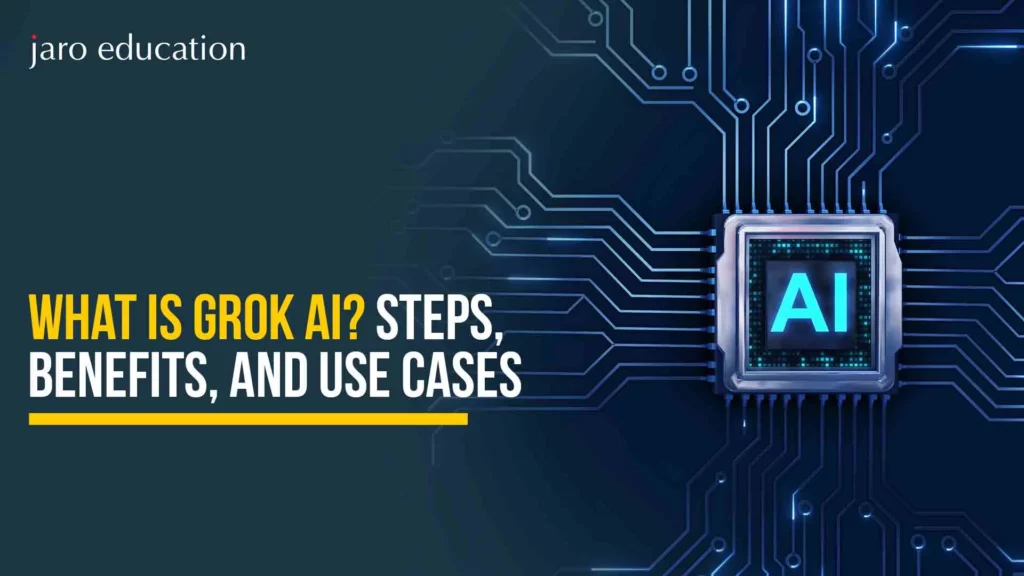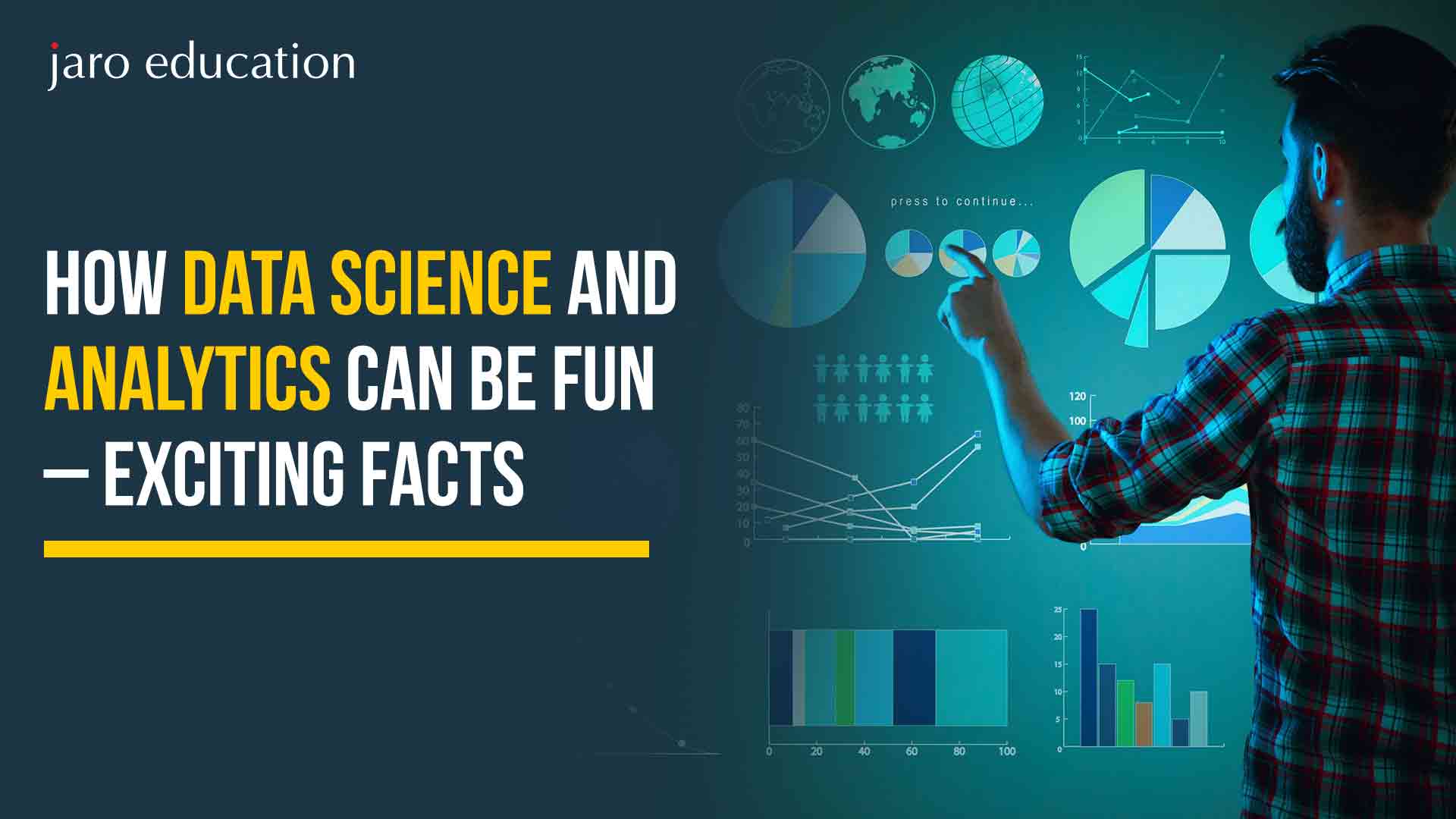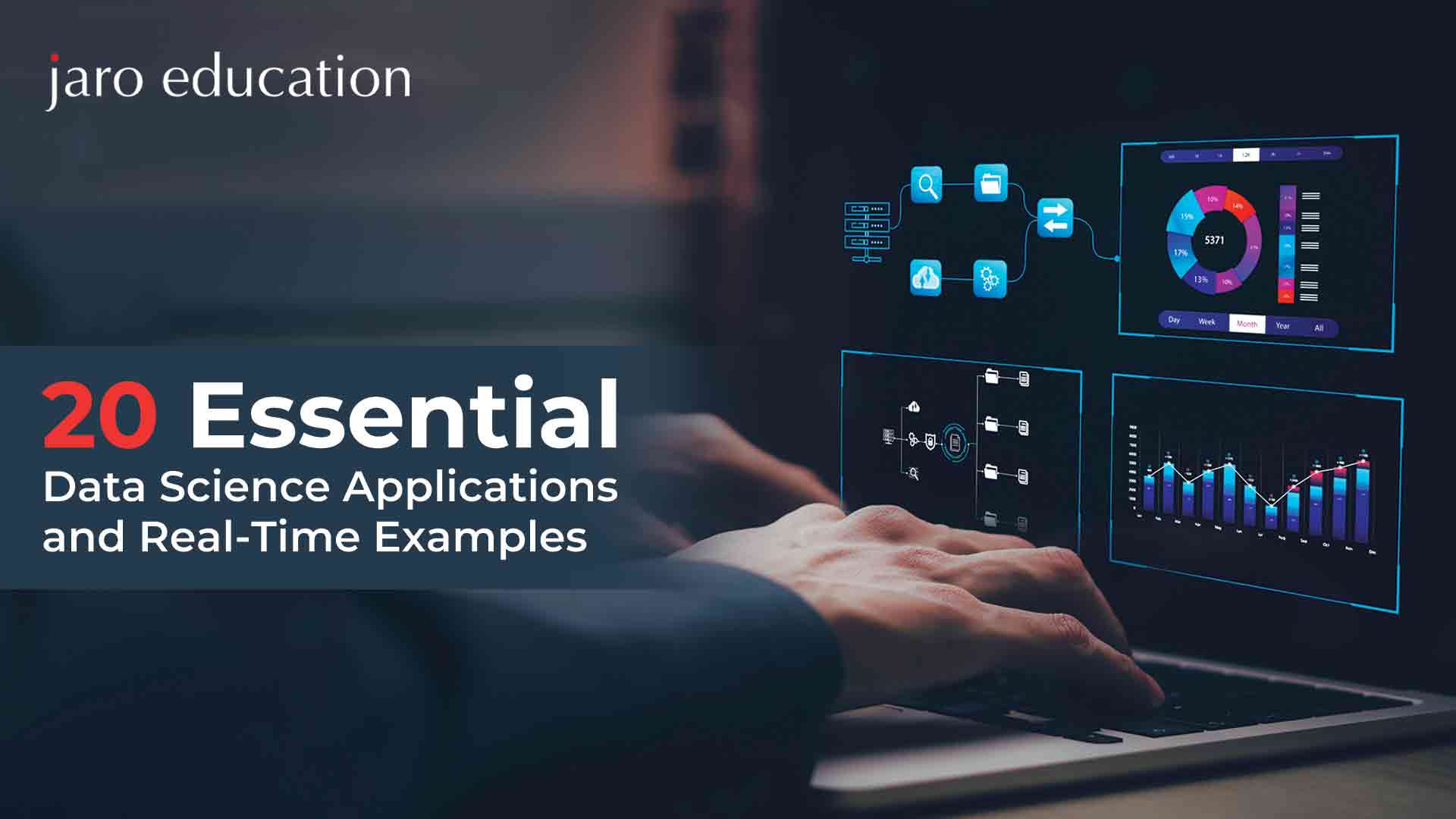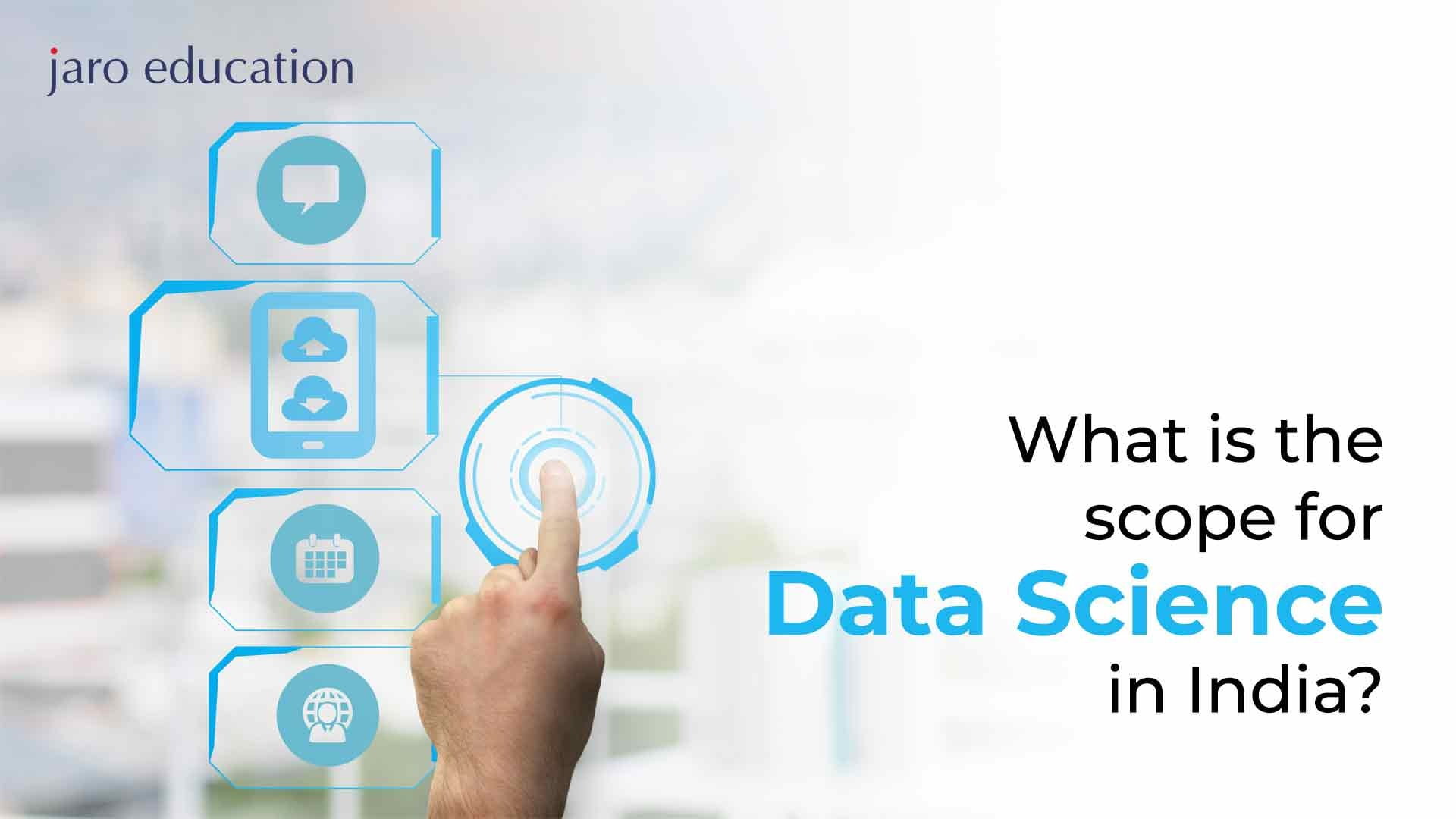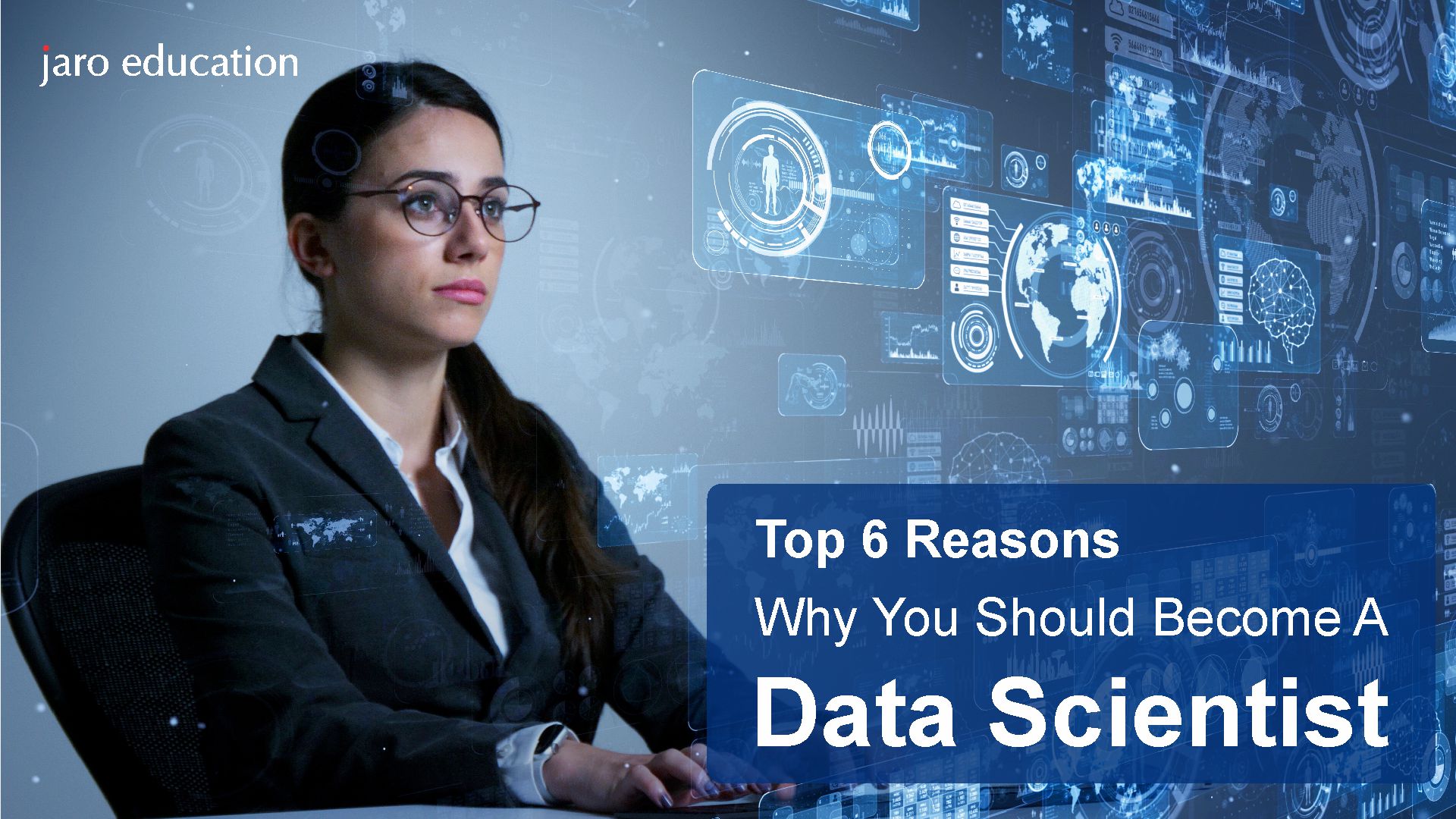30+ Advanced Data Science Concepts for Business Professionals
Table of Contents
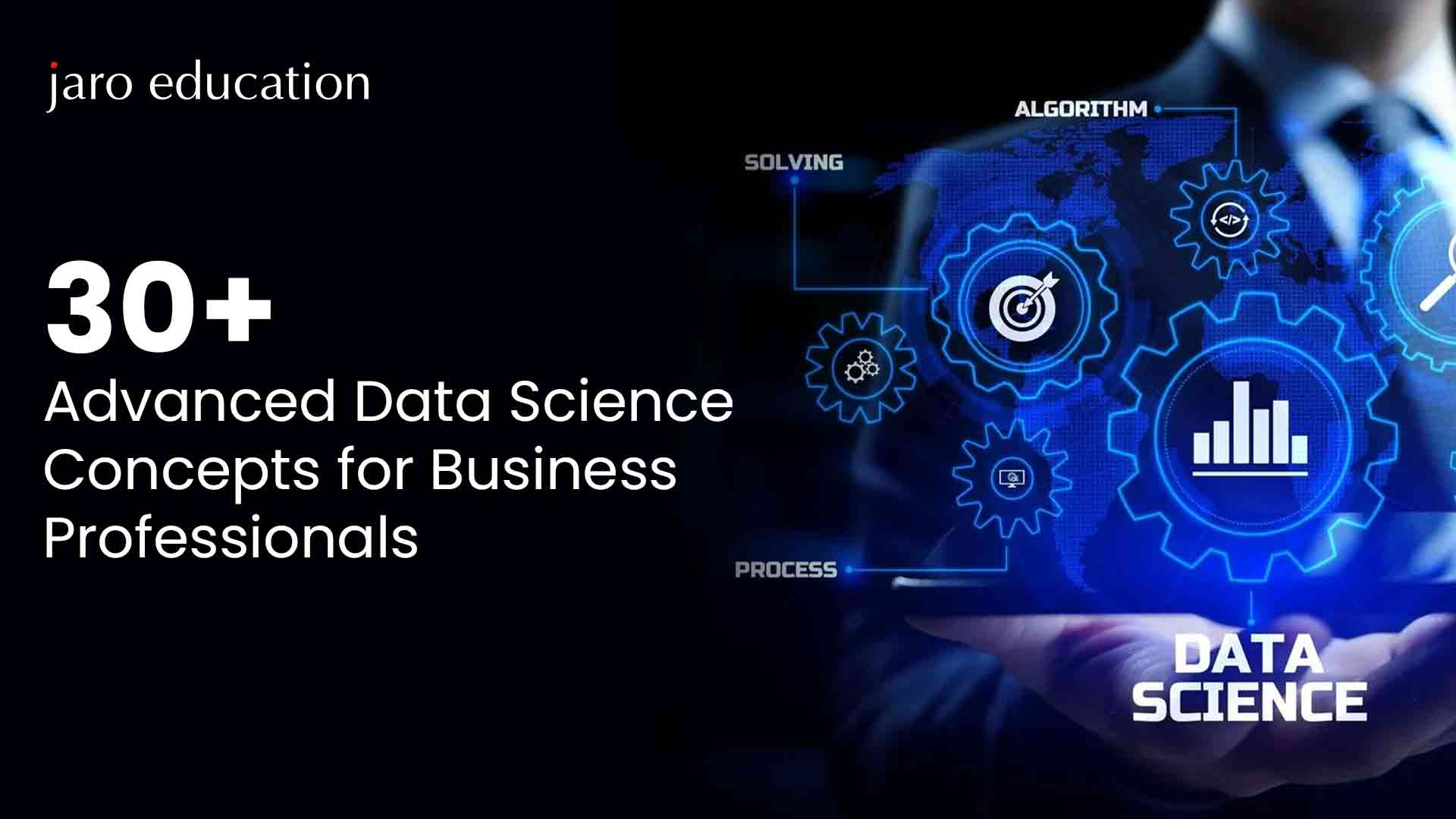
- jaro education
- 6, April 2024
- 10:00 am
In today’s data-driven landscape, advanced data science concepts are no longer confined to data scientists alone. Business professionals, from executives to marketers, must grasp these concepts to thrive in a competitive environment.
In this blog, we explore advanced statistical terms and methods that are of significant importance in feature engineering, data preprocessing steps, and are commonly discussed in data science. It will guide you through essential data science concepts that empower decision-making, enhance privacy practices, and drive innovation.
Without any further ado! Here is the list of 30+ Data science concepts every business professional should be aware of.
1. Deep Learning
Deep Learning is a stream of machine learning that revolves around artificial neural networks, drawing inspiration from the functioning of the human brain, and its capacity to learn from vast datasets. Unlike conventional machine learning techniques that process data in a linear fashion, deep learning organizes algorithms into layers, forming an intricate “artificial neural network.” This network can autonomously learn and make informed decisions. Deep learning excels in handling intricate and disorganized data types like images and audio files, making it a cornerstone in various modern AI applications. It serves as a fundamental pillar in numerous contemporary AI applications, ranging from speech and image recognition to the development of autonomous driving systems. The core strength of deep learning lies in its innate ability to automatically uncover the necessary representations crucial for feature identification or classification directly from raw data, thereby reducing the reliance on manual feature extraction methods.
2. Natural Language Processing (NLP)
NLP stands at the crossroads of computer science, artificial intelligence, and linguistics. It focuses primarily on the interplay between computers and humans using natural language. It aims to help computers to comprehend, interpret, and produce human language meaningfully. Advanced NLP methodologies encompass sentiment analysis, machine translation, speech recognition, and chatbots. The latest strides in deep learning have notably enhanced the efficiency and precision of NLP applications, facilitating a more nuanced grasp and generation of human language by machines.
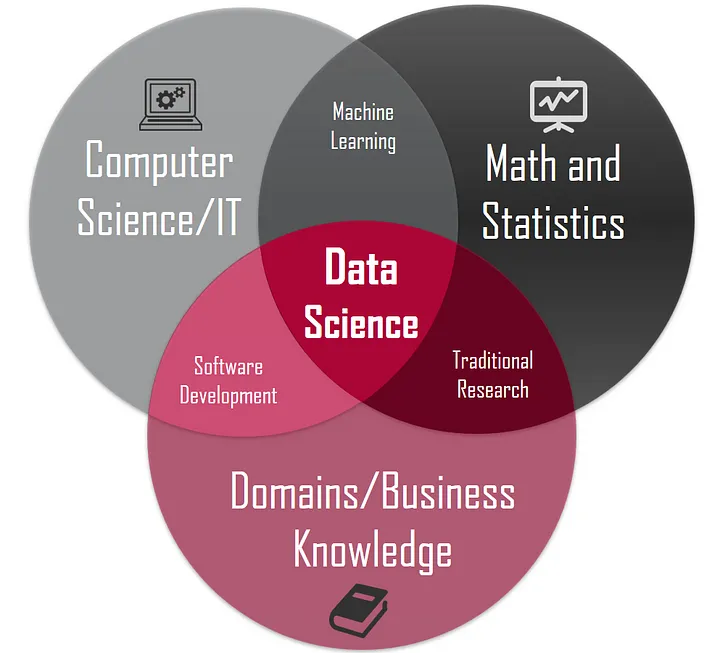
*towardsdatascience
3. Reinforcement Learning
Reinforcement Learning (RL) is a branch of machine learning that focuses on how an agent can learn to make decisions autonomously within an environment to accomplish specific objectives. Unlike supervised learning, where models are trained on pre-existing datasets, RL involves the agent learning from its actions and experiences through a process of trial and error. Feedback from these experiences, in the form of rewards for correct actions and penalties for mistakes, guides the agent in developing optimal strategies or policies to achieve its goals. RL finds wide-ranging applications in areas such as game playing (e.g., AlphaGo), autonomous navigation in robotics, and solving optimization problems.
4. Generative Adversarial Networks (GANs)
GANs, short for Generative Adversarial Networks, represent a category of artificial intelligence algorithms utilized in unsupervised machine learning. This approach involves a dual neural network system engaged in a competitive game. Developed by Ian Goodfellow and his team in 2014, GANs comprise a generative network responsible for creating new data instances, alongside a discriminative network tasked with evaluating these instances. The generative network generates synthetic data, attempting to mimic authentic data, while the discriminative network endeavors to differentiate between genuine and synthetic data. This rivalry prompts both networks to refine their techniques until the discriminative network is unable to distinguish between real and synthetic data accurately. GANs prove especially beneficial in generating lifelike images, videos, and voice recordings that closely resemble authentic ones.
5. Graph Neural Networks (GNNs)
GNNs are a type of neural network that directly operates on the graph structure. A graph comprises nodes (vertices) and edges (connections between nodes), representing complex relational data. GNNs are designed to capture the dependency patterns among nodes in a graph. They have been successfully applied in various domains such as social network analysis, recommendation systems, and biology for tasks like node classification, link prediction, and graph classification. GNNs leverage node feature information and the graph structure to learn a representation of each node in the context of its neighborhood, making them powerful tools for modeling relational data.
6. Explainable AI (XAI)
Explainable AI also known as XAI is methods and techniques in artificial intelligence that make the outcomes of AI models understandable by humans. The aim is to produce insights that are comprehensible to human experts, offering transparency behind the AI decision-making process. This is crucial in sensitive and critical applications like healthcare, finance, and legal systems, where understanding the basis of an AI’s decision can impact trust and adoption. XAI involves creating AI models that not only predict accurately but also provide explanations that are meaningful to the users, helping to demystify the model’s predictions and ensuring that AI systems are accountable, fair, and transparent.
7. Dimensionality Reduction
Dimensionality reduction is a crucial process utilized in machine learning and statistics to decrease the number of input variables within a dataset. The issue of high-dimensional datasets can pose challenges for numerous machine learning algorithms, often leading to subpar performance and increased computational burdens, commonly referred to as the “curse of dimensionality.”
To address this, various techniques such as Principal Component Analysis (PCA), t-distributed Stochastic Neighbor Embedding (t-SNE), and autoencoders are frequently employed. These methods effectively reduce data dimensionality by compressing the information while preserving most of the original variability. This not only aids in better data visualization but also results in faster computation and enhanced model performance by eliminating irrelevant features and minimizing noise.
8. Hyperparameter Optimization
Hyperparameter Optimization (HPO) in data science is finding the optimal set of hyperparameters for a learning algorithm. Hyperparameters are the configuration settings used to structure machine learning algorithms and govern the training process. Unlike model parameters that are learned during the training process, hyperparameters are set prior to training and significantly impact the model’s performance.
HPO is crucial because the performance of learning algorithms can be highly sensitive to the choice of hyperparameters. The goal is to automate the selection of these settings, rather than relying on manual tuning, which can be time-consuming and requires extensive experience. Common methods for HPO include:
- Grid Search is a method that involves thoroughly searching through a predefined set of hyperparameters. Although straightforward, it can be computationally intensive.
- Random Search, on the other hand, randomly selects combinations of hyperparameters to test, making it more efficient than Grid Search, especially in high-dimensional spaces.
- Bayesian Optimization utilizes a probabilistic model to forecast hyperparameter performance. It then systematically chooses new sets of hyperparameters to assess based on previous outcomes.
- Gradient-Based Optimization employs gradient descent to fine-tune continuous hyperparameters.
- Evolutionary Algorithms mimic natural selection by iteratively choosing and mutating a population of hyperparameter sets, aiming for optimal performance.
9. Information Gain
Information Gain in data science is a metric used primarily in the construction of decision trees and in feature selection. It measures the reduction in entropy or impurity in a dataset after a split is made based on an attribute. Entropy quantifies the level of unpredictability or disorder in the dataset. Information Gain quantifies how much splitting the data on a specific feature will reduce this disorder.
The formula for Information Gain is given by the difference in entropy before the split and the weighted average of the entropy after the split over all possible values of the attribute. High Information Gain implies a high reduction in entropy, suggesting that the feature is good at partitioning the data into homogenous subsets. This metric is crucial in algorithms like ID3, C4.5, and CART for choosing the most informative features to split on during the tree-building process.
10. Jaccard Similarity
The Jaccard Similarity is a statistical measure utilized to evaluate the similarity and dissimilarity between sample sets. It quantifies the similarity between two data sets by calculating the ratio of shared elements to the total number of unique elements present in both sets. The Jaccard Similarity index is specifically defined as the intersection size divided by the union size of the sample sets.

Where A and B are two sets of samples. The Jaccard Similarity ranges from 0 to 1, where 0 means there is no overlap between the sets (completely different) and 1 means the sets are identical. This metric is widely used in document clustering, recommendation systems, and ecological and genetic diversity studies.
11. K-Means Clustering
K-Means Clustering represents a widely used unsupervised learning technique aimed at dividing a set of n observations into k clusters. In this process, each observation is assigned to the cluster with the closest mean, essentially acting as a prototype for that cluster. Consequently, this approach leads to a division of the data space into Voronoi cells.
Here’s how the algorithm operates:
- Initialize k centroids randomly.
- Assign each data point to the nearest centroid, creating k clusters.
- Recalculate the centroids as the mean of all points assigned to each cluster.
- Repeat steps 2 and 3 until the positions of the centroids stabilize (convergence) or a maximum number of iterations is reached.
K-Means is simple and can be highly efficient, but its performance depends on the initial choice of centroids and the value of k. It is best suited for data where the clusters are spherical and well-separated. Various methods, such as the Elbow Method and the Silhouette Coefficient, are used to determine the most suitable number of clusters k.
12. Time Series Analysis
Time series analysis involves statistical techniques for analyzing time series data—data points indexed in time order. This is common in economics, business, engineering, and environmental science, where data is collected over time and the relationship between time-dependent observations is crucial. Time series analysis helps in understanding underlying patterns such as trends, seasonality, and cyclical fluctuations in the data. Advanced models like ARIMA (AutoRegressive Integrated Moving Average), Seasonal-Trend decomposition using LOESS (STL), and Prophet are used for forecasting future values in the time series, enabling more informed decision-making based on historical patterns.
13. Latent Dirichlet Allocation (LDA)
Latent Dirichlet Allocation or LDA is a statistical model used to categorize text within a document into specific topics. It creates models for topics within documents and words associated with each topic, represented as Dirichlet distributions. The process of LDA involves assuming that documents are a blend of various topics, and these topics generate words based on their probability distributions. By analyzing a dataset of documents, LDA retroactively determines the probable topics that would produce those documents.
LDA plays a crucial role in uncovering the underlying thematic patterns within extensive text collections, making it an invaluable tool for tasks like topic modeling and document clustering. It aids in structuring, comprehending, and summarizing vast amounts of textual data.
14. Naive Bayes Classifier
It is a machine learning model that operates on Bayes’ Theorem under the assumption of predictor independence. Despite its straightforwardness, Naive Bayes can surpass more complex classification techniques in performance. It computes the probability of each class and the conditional probability of each class given specific input values. These probabilities guide the classification of new input values by determining the most probable class they belong to.
This classifier is widely used in tasks such as filtering spam emails, categorizing documents, and performing sentiment analysis. Its effectiveness and ease of comprehension make it a practical option for these applications, particularly when handling vast datasets and high-dimensional feature spaces.
15. Precision and Recall
These are metrics used to evaluate the quality of results in information retrieval, classification, and machine-learning tasks.
- Precision, also known as positive predictive value, assesses the correctness of positive predictions generated by the model. To calculate Precision, you have to divide the number of true positive results by the total number of positive results predicted by the classifier.
- Recall, also called sensitivity, gauges the model’s capacity to identify all relevant instances in the dataset. Calculation of Recall is done by dividing the number of true positive results by the total number of actual positives in the data.
Both precision and recall are important in contexts where the balance between the relevance of retrieved items (precision) and the ability to retrieve all relevant items (recall) is crucial. The trade-off between them is often visualized using a Precision-Recall curve, and a combined metric called the F1-score is used to measure a test’s accuracy.
16. Random Forest
Random Forest is a versatile ensemble learning technique utilized for various tasks such as classification, regression, and more. It functions by generating numerous decision trees during the training phase. In classification tasks, the Random Forest outputs the class chosen by the majority of trees, while in regression tasks, it provides the average prediction from the individual trees. This approach addresses the tendency of decision trees to overfit to the training data.
The Random Forest algorithm constructs multiple decision trees and then determines the mode of classes (for classification) or the mean prediction (for regression) from these trees. Additionally, Random Forests offer a dependable estimate of feature importance, making them valuable for feature selection. This model is user-friendly, adaptable to both categorical and numerical data, and widely employed across various domains.
17. Bayesian Methods
Bayesian methods represent a branch of statistics that utilizes probability to quantify the level of belief in an event, with this belief being subject to adjustments based on fresh evidence. These methods rely on Bayes’ Theorem to revise the probability of a hypothesis as additional evidence or information emerges. In the realm of data science, Bayesian techniques find application across tasks such as parameter estimation, decision-making, and predictive modeling. One of the notable strengths of Bayesian methods lies in their adeptness at managing uncertainty and incorporating prior knowledge into models, rendering them highly advantageous in intricate modeling situations characterized by limited or incomplete data.
18. Model Deployment and Monitoring
Model deployment refers to the integration of a machine learning model into an operational environment for making informed business decisions based on data. This encompasses various tasks, such as placing the model in a live setting to generate predictions on new data and establishing connections with the necessary IT infrastructure. The deployment process can be intricate, necessitating meticulous planning to handle dependencies, data pipelines, and scalability challenges.
Monitoring plays a crucial role post-deployment. It entails continually assessing the model’s performance, identifying issues like model drift (where performance deteriorates due to changes in data distribution), and ensuring alignment with business goals. Effective monitoring alerts data scientists to performance fluctuations or data quality concerns, prompting updates or retraining to uphold high levels of accuracy and dependability.
19. Advanced Ensemble Methods
Ensemble methods in ML use the power of multiple learning algorithms to achieve enhanced predictive performance compared to individual algorithms. More advanced techniques like stacking, blending, and advanced boosting methods such as XGBoost and LightGBM involve the strategic integration of different models to mitigate bias, variance, or both. For instance, stacking combines predictions from several base models by training a new model, while blending achieves a similar outcome using a validation set to train the combiner model. These sophisticated ensemble strategies contribute significantly to improving accuracy in predictive modeling tasks.
20. Anomaly Detection
Anomaly detection or outlier detection, entails the identification of uncommon patterns that deviate from anticipated behavior. This practice finds extensive application across various domains such as fraud detection, network security, fault detection, system health monitoring, and the identification of ecosystem disturbances. Anomaly detection methods are typically classified into supervised, unsupervised, and semi-supervised techniques based on the presence of labeled data. Advanced anomaly detection leverages intricate statistical, machine learning, and deep learning methodologies to accurately pinpoint anomalies, even when dealing with exceedingly intricate and high-dimensional datasets.
21. Transfer Learning
This key concept in machine learning involves utilizing knowledge acquired from solving one problem and applying it to another related problem. For instance, the expertise gained in identifying cars can be utilized in recognizing trucks. This method becomes especially valuable when there’s a scarcity of data available for a particular task because it enables the utilization of abundant data from a related task. In deep learning, transfer learning often entails taking a model that has been trained on a large dataset and refining it for a specific task with a smaller dataset. This technique has played a crucial role in the success of various applications across domains such as natural language processing (NLP), computer vision, and speech recognition.
22. Multi-Task Learning
Multi-task learning (MTL) is a specialized area within machine learning that aims to enhance the overall performance of multiple related tasks by leveraging valuable insights from them collectively. Rather than treating each task as an independent entity, MTL trains these tasks concurrently while utilizing a common representation. This methodology promotes more effective learning and boosts performance across tasks by sharing knowledge. MTL proves particularly advantageous when tasks have interconnections, facilitating mutual learning, or when certain tasks suffer from limited data availability. Its applications span across diverse domains such as natural language processing (NLP), where it enhances language models by jointly addressing interconnected language tasks, and computer vision, where models can be trained to simultaneously identify multiple objects.
23. Scalable Machine Learning
Scalable machine learning refers to algorithms’ capacity to efficiently handle increasing amounts of data or computation. As data volumes grow rapidly, the ability to scale learning algorithms without significantly increasing computation time or resources becomes crucial. Scalability can involve algorithmic optimizations, distributed computing, and efficient data storage and processing techniques. Technologies such as Apache Spark and distributed deep learning frameworks are examples of tools that facilitate scalable machine learning, enabling data scientists to train complex models on large datasets more efficiently.
24. Privacy-Preserving Machine Learning
Privacy-preserving machine learning focuses on developing algorithms that can learn from data without compromising the privacy of the individuals to whom the data belongs. This concept is increasingly important as more sensitive data is used to train machine learning models. Techniques such as differential privacy, which provides a mathematical framework for quantifying the privacy loss incurred by the release of information, and secure multi-party computation, which allows parties to compute functions jointly without revealing their inputs, are key to this field. As mentioned earlier, Federated learning is also a form of privacy-preserving machine learning, as it allows models to be trained directly on devices without centralizing data.
25. Ethical AI
Ethical AI concerns AI technologies and systems’ ethical, moral, and social implications. It includes principles and practices that seek to ensure AI technologies are developed and deployed in a way that respects human rights, democracy, and the norms of society. Also encompasses considerations around transparency, fairness, accountability, and ensuring AI systems do not perpetuate bias or discrimination. As AI systems become more integrated into daily life, addressing these ethical considerations becomes increasingly critical to ensure that technology benefits society.
26. Deep Reinforcement Learning
Deep Reinforcement Learning (DRL) is a fusion of deep learning and reinforcement learning concepts designed to tackle various decision-making tasks. Deep neural networks, DRL approximate value functions, policies, or environment models, allow agents to learn from intricate inputs and make decisions. This approach has succeeded in diverse domains, including mastering video games at an exceptional level, controlling robots, navigating autonomous vehicles, and excelling in complex strategy games like Go. Noteworthy DRL models like Deep Q-Networks (DQN), Trust Region Policy Optimization (TRPO), and Proximal Policy Optimization (PPO) have showcased their capacity to acquire sophisticated strategies in challenging environments.
27. Spatial Data Analysis
Spatial Data Analysis involves the manipulation and analysis of data that has a geographical or spatial aspect. This type of analysis is critical in fields such as geography, urban planning, environmental science, and transportation, where understanding spatial patterns, relationships, and trends can inform decision-making and policy. Techniques in spatial data analysis include spatial autocorrelation and spatial regression, geographic information systems (GIS) for mapping and visualization, and spatial machine learning models that can handle the unique properties of spatial data. The goal is to extract meaningful insights from data that is not merely numerical or categorical but has a spatial context.
28. Neuroevolution
Neuroevolution is a type of artificial intelligence that employs evolutionary algorithms to create artificial neural networks, replicating the natural evolution process. This method refines the structure, weights, and hyperparameters of a neural network to enhance its performance in a specific task. It proves especially beneficial for scenarios where the most effective network architecture isn’t predetermined. Various techniques like genetic algorithms, genetic programming, and evolutionary strategies are employed to navigate through potential neural network designs. The process involves selecting and breeding networks with superior performance, progressively enhancing the network population.
29. Advanced Optimization Techniques
Advanced Optimization Techniques encompass a broad range of mathematical methods used to find the best possible solution or outcome within a given set of constraints or conditions. In the context of machine learning and data science, optimization techniques are crucial for model training, where the goal is to minimize (or maximize) a loss (or objective) function. Beyond classic gradient descent and its variants (stochastic, mini-batch), advanced optimization techniques include second-order methods like Newton’s method and quasi-Newton methods (e.g., BFGS), constrained optimization, global optimization methods, and recent innovations like Adam and RMSprop. These techniques are essential for efficiently training complex models, especially in deep learning, where the landscape of the loss function can be highly non-convex and challenging to navigate.
30. Meta-Learning
Meta-learning, or “learning to learn,” focuses on the design of algorithms that can learn from very small amounts of data or rapidly adapt to new tasks with minimal intervention. The core idea behind meta-learning is to enable models to generalize knowledge from previous tasks to perform better on unseen tasks. This is achieved through various approaches, such as few-shot learning, where models are trained to make predictions from a very limited number of examples, or learning optimal learning strategies across tasks. Meta-learning is particularly relevant in scenarios where data is scarce or expensive to obtain, and it holds promise for enhancing the flexibility and efficiency of machine-learning models.
31. Causal Inference
Causal inference is a statistical approach that seeks to determine the cause-and-effect relationships between variables, beyond mere associations. It involves the use of statistical models to deduce the causal impact of one variable on another. Techniques in causal inference include controlled experiments (such as randomized controlled trials), observational studies with techniques like propensity score matching, and instrumental variables that can help infer causality in the presence of confounding factors. Causal inference is critical in fields such as economics, epidemiology, and social sciences, where understanding the true impact of interventions or policies is essential.
32. AI Fairness and Bias
AI fairness and bias address the ethical and operational challenges in ensuring that AI systems operate without unfair bias or discrimination. Bias in AI can arise from various sources, including biased training data, algorithmic bias, or the misapplication of models. Ensuring fairness involves developing methodologies to detect, mitigate, and prevent bias in AI systems, including diverse dataset collection, bias correction techniques, and fairness-aware modeling. This area emphasizes the importance of creating AI systems that are equitable and do not perpetuate existing social inequalities, focusing on fairness metrics, transparent model behavior, and ethical AI governance.
33. Multimodal Learning
Multimodal learning refers to the integration and analysis of data from multiple sources or modalities (e.g., text, images, audio) within a single model to improve its decision-making or predictive capabilities. The challenge in multimodal learning is to effectively combine information from these diverse data types in a way that leverages their complementary strengths. Applications of multimodal learning include emotion recognition (combining facial expressions with tone of voice), medical diagnosis (integrating patient records with imaging data), and autonomous driving (processing visual, radar, and lidar signals). Techniques in multimodal learning often involve complex architectures that can process and fuse information from different modalities efficiently.
34. Graph Analytics
Graph analytics involves the analysis of data that is represented as graphs (composed of nodes and edges), enabling the study of relationships and networks. This field applies various algorithms and methodologies to explore the structural characteristics of graphs, identify patterns, and predict dynamics within networks. Common applications include social network analysis, where users are nodes and relationships are edges; supply chain optimization, where nodes represent suppliers and edges represent the flow of goods; and fraud detection, where transactions can form networks that reveal suspicious patterns. Graph analytics employs techniques such as centrality analysis, community detection, and graph-based machine learning models to extract insights from complex, interconnected data.
Conclusion
These important data science terms are categorized under advanced concepts because they often involve complex principles and nuances. Understanding these terms can be a bit challenging due to their intricate nature and the depth of knowledge required to grasp them fully.
To learn the fundamentals and advanced concepts of data science, consider enrolling in the IIM Nagpur – Post Graduate Certificate Programme in Data Science for Business Excellence and Innovation. This course will guide you on a learning journey to recognize pertinent use cases aligned with cutting-edge AI and ML techniques. Discover how to redefine suitable analytical solutions, execute these solutions effectively, and leverage the outcomes for strategic and operational initiatives, thus driving organizational transformation.
Remember, continuous learning and practice are key to mastering these advanced data science concepts. Keep exploring, experimenting, and applying these techniques to enhance your data analysis skills and excel in your data science endeavors.


